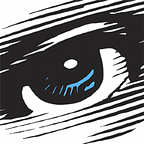The Driver (1978, Dir. Walter Hill)
Synopsis:
The Driver (Ryan O’Neil) is the best getaway driver there is. Nicknamed ‘Cowboy’ by the cop (Bruce Dern) who is determined to catch him, he’s a loner and lives by a strict code of conduct and expects those he works with to do the same. When he’s spotted by a young gambler (Isabelle Adjani) whilst waiting for a gang of crooks who have just robbed a casino, the cop thinks he finally has a chance to arrest him, but the woman refuses to pick him out of a line up. Forced to let ‘Cowboy’ go, the cop decides to set him up by blackmailing a group of crooks to hire The Driver for a bank robbery but nothing quite goes as planned.
Walter Hill is somewhat of a ‘hit and miss’ director for me: he’s done a handful of films (this, Crossroads, Warriors, Southern Comfort and maybe Streets Of Fire) that I really like, some (Red Heat, Last Man Standing, 48 Hrs) that have some good moments but haven’t held up that well when you rewatch them now, and a bunch of others (Another 48 Hrs, Trespass, Brewster’s Millions, Supernova) that are just terrible. Beginning his career as a screenwriter, he moved into directing with this film (which meant he had to turn down directing Alien, electing to simply re-write the script and produce — a good thing, as that film wouldn’t be what it is without Ridley Scott and if Supernova is anything to go by, sci-fi is clearly not Hill’s forté). A critical and commercial failure on its release, with Hill himself saying that if he hadn’t already been directing Warriors this would have ended his directorial career before it even began, it’s since been re-evaluated and has had a clear influence on more recent movies such as Thief, Heat, Drive and Baby Driver and shows that the best elements of Hill’s filmic style were already in place at the start of his career.
To me, there’s a very clear line of comparison between this film and the sparse, minimalist crime thrillers of Jean-Pierre Melville, such as Le Samourai (from which it clearly borrows the theme of a criminal and a witness being attracted to one another) and Un Flic (the dynamic between the criminal and the policeman who is pursuing him) and perhaps part of the problem for audiences at the time was that they weren’t expecting this sort of film to be made by an American director. Like Melville, Hill pares dialogue and character backstory down to the bone. There’s no dialogue at all during the first 5 minutes of the film, instead we just have background sound effects and Michael Small’s eerie, spartan score. So much of this film is conveyed in looks and facial expressions, with Adjani in particular being able to convey more with a slightly raised eyebrow than a long monologue. We never discover any of the characters names (in the credits they are simply referred to as “the Driver”, “the Cop”, “The Player” etc.) and there is very little exposition. As a counterpoint to both O’Neal and Adjani’s relatively taciturn characters, there’s Bruce Dern’s slightly manic and sarcastic performance as the policeman, who is every bit as dangerous and potentially deranged as the criminals The Driver works for. All 3 of the leads are brilliant, with O’Neal in particular giving probably the best performance of his entire career as the cold and monosyllabic title character; as well as a great performance by Ronee Blakely, who at that point was best known for her singing and her role in Robert Altman’s Nashville.
The cinematographer was Philip H. Lalthrop, who’d begun his career as a camera operator for Russell Metty on Orson Welles’ Touch Of Evil, and later on had been the director of photography on John Boorman’s Point Blank, a film whose screenplay had apparently heavily influenced Hill’s work as a screenwriter and particularly The Driver, yet Lalthrop’s work here is quite different from the stylized, bleached out vision of San Francisco depicted in Boorman’s film, though. This is a largely nocturnal world, whose mis-en-scene is more clearly rooted in reality.
Michael Small’s score is another key element in this film’s success. Small, whose soundtrack work pretty much defines the gritty feel of 70s Hollywood for me, is an absolute master at combining chamber ensemble orchestrations with unusual textures, either from unusual percussion instruments or eerie vocals (as he did on Alan J. Pakula’s Klute) or early synthesizers (such as here or on Marathon Man). He’s also not afraid to let scenes play out in near silence, with maybe an occasional sting or sustained note to underline a particular moment. At the very opening of this film, shown in the YouTube clip below, the first cue blends so well with diagetic sound of the film that you’re not actually sure whether you’re hearing music or sound effects. Of his scoring contemporaries, only Jack Nietzche was as adept at melding the music so seamlessly with the rest of the film and like Small, this very subtlety is probably why the work of both of these amazing composers has been rather unfairly forgotten in recent years.
With its predominantly nocturnal setting , The Driver is one of those films best appreciated late at night, perhaps with a glass of whiskey in hand, where you can allow its minimalist charm, impressive car chases and noir vibe to wash over you, especially its recent 4K restoration, and realize just how much this film has gone on to influence other films in the 40 odd years since its release.
